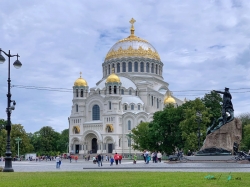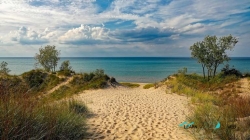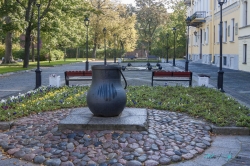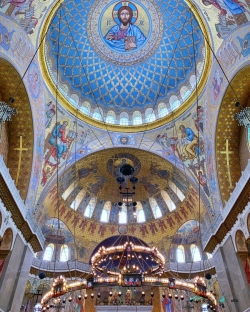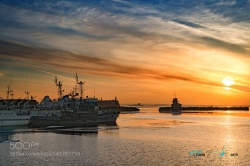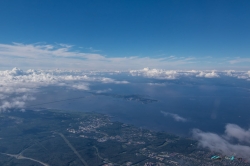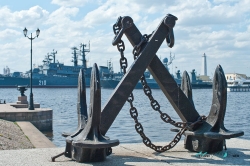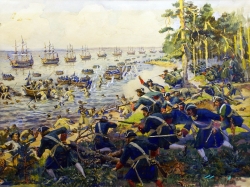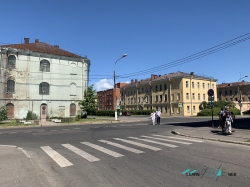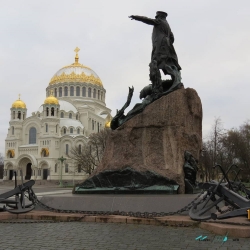Kotlin (Russian: Ко́тлин) is a Russian island, located near the head of the Gulf of Finland, 32 kilometres (20 mi) west of Saint Petersburg in the Baltic Sea. Kotlin separates the Neva Bay from the rest of the gulf. The fortified city of Kronstadt is located on the island and forms part of a World Heritage Site that is Saint Petersburg and Related Groups of Monuments. The island serves as a gateway to Saint Petersburg and as such has been the site of several military engagements.
Peter I (the Great) captured the island from the Swedes in 1703 and constructed a fort and docks—then called Kronslot—to protect the approaches to St. Petersburg. Until a channel to St. Petersburg was dredged in 1875–85, Kronshtadt was also a commercial port in which cargoes were transshipped to smaller craft.
Its fortifications, which were frequently reconstructed and strengthened, played a notable role in the defense of the old Russian capital, especially during the 1941–44 Siege of Leningrad (as St. Petersburg was then called). The sailors and garrison of Kronshtadt played major roles in several Russian revolutionary movements: a Kronshtadt officer led the mutiny of the Decembrists in St. Petersburg in 1825, and a Kronshtadt sailor was the leader of the military organization of the revolutionary Narodnaya Volya group and was shot in 1882. Mutinies broke out among the troops in 1905–06 but were suppressed. After the February Revolution (1917), the Kronshtadt Soviet opposed the provisional government, declared a “Kronshtadt Republic,” and took part in the July 1917 mutiny. During the October Revolution (1917), the Baltic Fleet cruiser Aurora bombarded the Winter Palace in the capital as a preliminary to the Bolshevik seizure of power.
In March 1921, in the so-called Kronshtadt Rebellion, Kronshtadt sailors mutinied against the Soviet government.
Source: www.britannica.
Peter I (the Great) captured the island from the Swedes in 1703 and constructed a fort and docks—then called Kronslot—to protect the approaches to St. Petersburg. Until a channel to St. Petersburg was dredged in 1875–85, Kronshtadt was also a commercial port in which cargoes were transshipped to smaller craft.
Its fortifications, which were frequently reconstructed and strengthened, played a notable role in the defense of the old Russian capital, especially during the 1941–44 Siege of Leningrad (as St. Petersburg was then called). The sailors and garrison of Kronshtadt played major roles in several Russian revolutionary movements: a Kronshtadt officer led the mutiny of the Decembrists in St. Petersburg in 1825, and a Kronshtadt sailor was the leader of the military organization of the revolutionary Narodnaya Volya group and was shot in 1882. Mutinies broke out among the troops in 1905–06 but were suppressed. After the February Revolution (1917), the Kronshtadt Soviet opposed the provisional government, declared a “Kronshtadt Republic,” and took part in the July 1917 mutiny. During the October Revolution (1917), the Baltic Fleet cruiser Aurora bombarded the Winter Palace in the capital as a preliminary to the Bolshevik seizure of power.
In March 1921, in the so-called Kronshtadt Rebellion, Kronshtadt sailors mutinied against the Soviet government.
Source: www.britannica.



